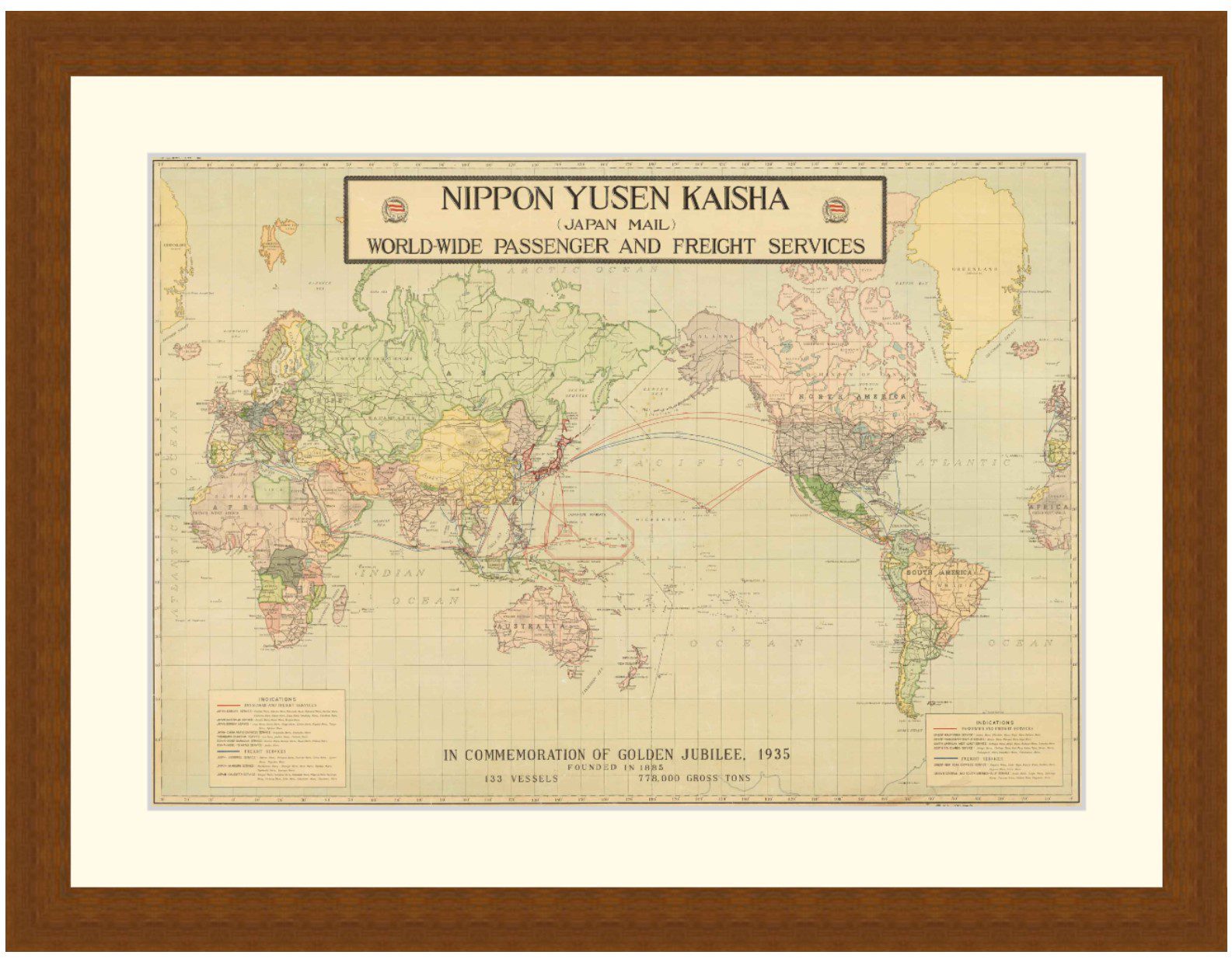Reading time: 10 minutes
During the battle of Pinios Gorge, which took place in April 1941, Anzac troops played a pivotal role in delaying the German advance to Larisa in central Greece, a town of significant strategic importance. Once you’ve visited the battlefield area, there are plenty of reasons to hang around. This brief guide will get you started with recommendations about what to see and do.
By Julia Hammond.
Where to stay
Platamon, also known as Platamónas, is a lively seaside resort on Greece’s Aegean Coast. It makes a convenient base while you’re exploring the Pinios Gorge region. There’s a wide range of accommodation options including hotels, rental properties and campsites. Swimming is possible from its sandy beach, while local operators offer a plethora of water sports, including parasailing, banana boats and aqua sliders as well as regular boat trips. The harbour and waterfront provide a focal point for evening strolls.


Where to eat and drink
Though it only has a small year-round population, over the course of a typical summer 120,000 visitors flock to Platamon. As a result, it can sustain a variety of eateries, from waterfront tavernas that capitalise on the fish caught locally to ice cream parlours and fast food joints ideal for when you need to fuel up on the go.
A good place to start looking for a restaurant is on Platamónas Strand, as beachfront dining is a popular option in summer and there’s plenty of choice. Another standout is Haris fish taverna which boasts an attractive outlook over the marina. You may also wish to head up into the hills for a post-sunset meal in the quaint village of Palaios Panteleimonas, a popular excursion.
How to get around
Public transport is available, but limited. Platamon sits on the railway that connects Thessaloniki to the north with Larisa to the south. Travelling by train isn’t the most convenient option for getting around, not least because the nearest station to Platamon is out of town, at Neoi Poroi. To reach Dion, for instance, you’ll need to first catch a train from Neoi Poroi to Katerini and then a bus.
Taxis are available locally. However, if you’re planning to tour the region more extensively, arranging your own transport will be much more cost effective, especially if there are a few of you. It’s possible to rent a car in Platamon itself if you’re keen to avoid having to contend with big city traffic when you arrive. Try Olympus Rent-a-Car, for example, a family-run business with an office in Neoi Poroi.
What to see and do
Platamon Castle
A medieval castle constructed by Crusaders in the 13th century dominates modern-day Platamon. Its hilltop position was ideal for overlooking the Tempe Valley, a key point on the land route between north and central Greece. This location goes some way to explaining why control of it was so highly sought after; in fact, the castle was built on the site of an earlier fortress thought to have been erected by the Byzantines several hundred years before.
Over the years, Platamon Castle continued to change hands, reverting to Byzantine ownership in the 12th century but captured by the Turks in 1385. The Venetians held it for a few years in the 14th century, after which the Ottomans regained control. During World War Two, ANZAC soldiers fought bravely from the castle to halt the German advance to Thessaly. However, coming under heavy bombardment, they failed in their objective and were forced to retreat.


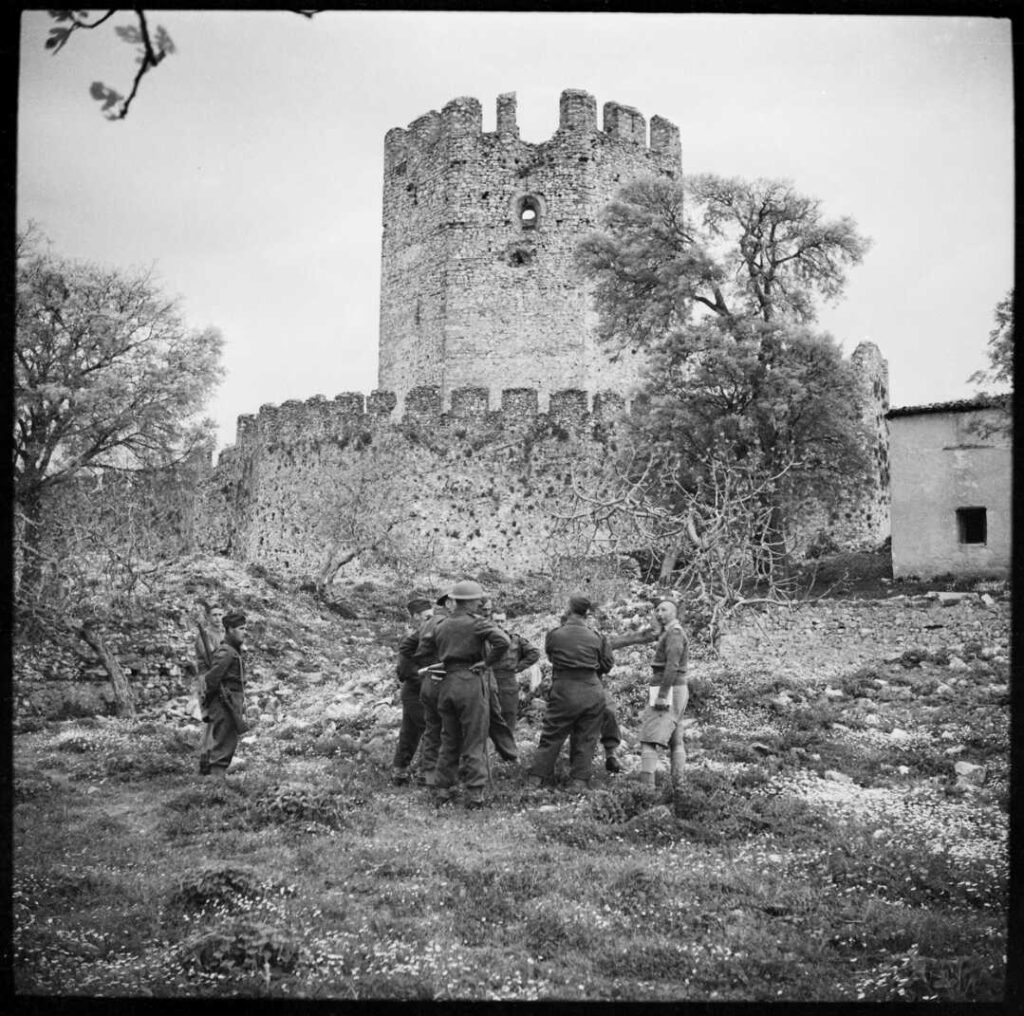
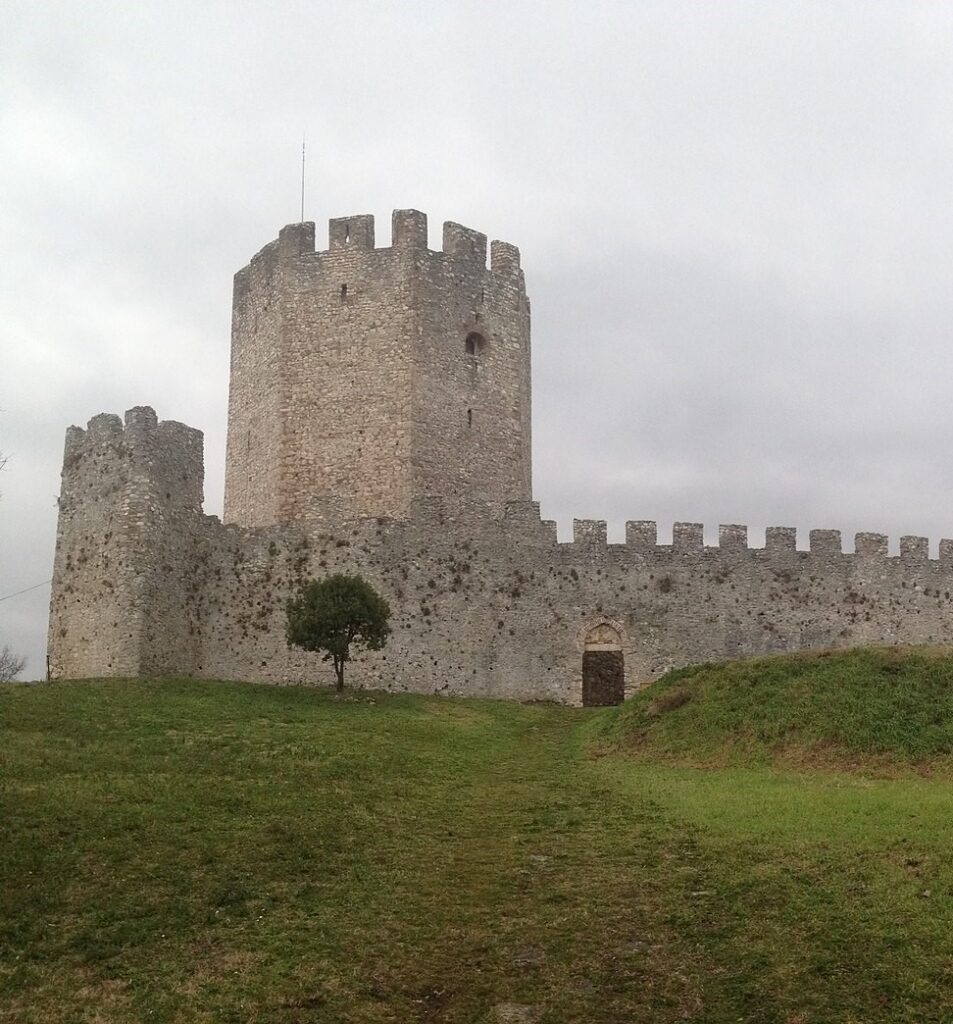
Today, this restored landmark is a popular visitor attraction, not only because of its fascinating history but also the panoramic views over the Aegean Sea and Mount Olympus beyond its crenellated walls and towers. Tourists follow a stone pathway to access the castle through a 13th century arch which leads to the fortress itself. In summer, during the Olympus Festival, the grounds become a theatre and concert venue.
Planning a visit to this battlefield?
Fill in the form below and a History Guild volunteer can provide you with advice and assistance to plan your trip.
Palaios Panteleimonas
While you’re in the area, it’s worth driving up to the mountain village of Palaios Panteleimonas (not to be confused with beachfront Paralia Panteleimonas by the sea north of Platamon Castle). It will only take around 15 minutes from downtown Platamon, close enough to take a taxi if you don’t want to tackle the road’s tight twists and turns yourself.
People have lived in this charming village since the 14th century. Though the place fell on hard times thanks to out-migration after World War Two, its historic buildings were extensively restored a few decades ago and it’s now classed as a National Heritage Monument.

Park on the edge of the village and continue in on foot. Look out over the terracotta tiled roofs to the coast down below before wandering the cobblestone streets and alleyways to check out its old stone church and houses with wooden beams and balconies. During the summer tourist season, it’s a popular stop for sunset watchers; you may wish to join a tour. Meanwhile in autumn, the village hosts a chestnut festival in the main square.
Mount Olympus National Park
An hour’s drive north west of Platamon, Mount Olympus National Park was Greece’s first, designated in 1938. It is also a UNESCO World Biosphere Reserve. At its heart is Mount Olympus, which Ancient Greeks believed to be the home of the 12 Gods, the Muses and the Graces, the place where a victorious Zeus battled Cronus and the Titans.
The tallest mountain in the country, Olympus actually comprises 52 peaks, the highest of which is Mytikas, rising 2,917 metres above sea level. To reach the summit, prepare for some tough scrambling. Fortunately, the densely forested lower are much easier to access. Oaks and junipers give way to stands of beech, dogwood, firs and pines as you climb higher; you might see chamois, roe deer, falcons, eagles and sparrow hawks during your hike.

The Archaeological Park of Dion
Half an hour to the north of Platamon is Dion. It was a sacred city to the Macedonians and the site of its sanctuaries honouring the god Zeus. Sanctuaries to Demeter and Artemis are also found here and also, across the river, one honouring the Egyptian deity Isis. Augustus established a Roman colony here about 30BC and you’ll see Roman tombs bearing Greek inscriptions on the grass outside the museum.
It’s all here: villas, shops, theatres, stadiums, baths, latrines and myriad other ruins. There’s enough left of the structures to get a sense of what the place would have been like all those centuries ago as you walk over the uneven stones of the Cardo Maximus. Yet, tragedy would strike just a few centuries later. In the 5th century AD, a succession of earthquakes led to the evacuation of its inhabitants and the city being engulfed in mud.

Extensive excavations provide a window onto the past for today’s travellers and as a result this sprawling archaeological park is a must-see for visitors to the area. In places, springs bubble up and floodwater conceals some of the structures. A lot of artefacts have been removed from their original sites for safekeeping and are now on display in a museum in nearby Dion village. They include mosaics, statues, funeral steles and jewellery.
Travel through the Pinios Gorge
The Pinios River (sometimes written Pineiós and also known as the Vale of Tempe) wriggles its way from its source high in the Pindus Mountains to the glittering waters of the Aegean Sea. Along the way, it cuts a steep-sided gorge as it squeezes between Mounts Olympus and Ossa. Eventually, it forms a delta near Stomio where you’ll see many migratory birds.
The Ancient Greeks believed that this gorge was cut by Poseidon’s trident. They also referred to the place as a favourite hangout of Apollo, who purified himself in the water here after killing the serpent Python. Also, it was here that Apollo’s son Aristaeus chased Eurydice with whom he was infatuated. But the wife of Orpheus was fatally bitten by a snake as she ran away from Aristaeus, and her heartbroken husband never recovered from his grief.
Long before the 20th century, the gorge’s strategic importance meant it had often been fought over. In 480BC, the Athenians and Spartans joined forces in an attempt to see off a threat from Xerxes I of Persia; tipped off by Alexander of Macedon that they were greatly outnumbered they were forced to retreat. Later, Romans, Goths, Byzantines (who knew the place as the Wolf’s Throat) and Ottomans would fight here too.
But this gorge has also been a place of pilgrimage. A cave shrine dedicated to the Christian saint Aghia Paraskevi nestles within the gorge. A commemorative chapel was built here a little over a hundred years ago and is reached by crossing the river over a small footbridge. To the south, you’ll encounter what remains of the Ottoman-era Hasan Baba Tekke, a medieval gathering place for dervishes. It was seen as a place of healing, particularly for children, and it was also a focal point for women trying to conceive.
Nature now takes centre stage; birdsong emanates from the forest and rare, endemic plants are able to flourish. At its narrowest point, the Pinios Gorge is just 25 metres wide and around 400 metres high. It’s an extraordinary place that’s even more breathtaking when viewed from on the water, so you might choose to paddle along the river on a guided rafting tour or rented kayak.
As you can see, there’s much to do in the Pinios Gorge region, so why not plan to spend some time exploring this fascinating and beautiful corner of the Greek mainland? While you’re here you can explore the Second World War Battlefield that saw Australians and New Zealanders holding the advancing Germans for long enough to allow the Allies to withdraw further south.
Interactive Map of the Battle of Pinios Gorge
Podcasts about Australians in the Mediterranean during WWII
Articles you may also like
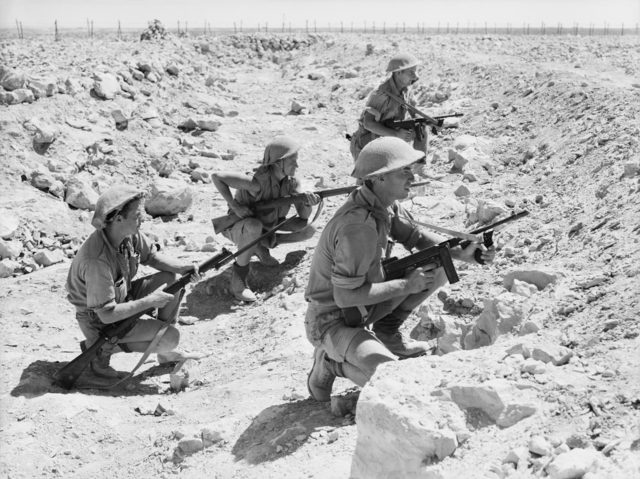
Tobruk – Podcast
Tobruk was one of the greatest Allied victories – and one of the worst Allied defeats – of the Second World War.
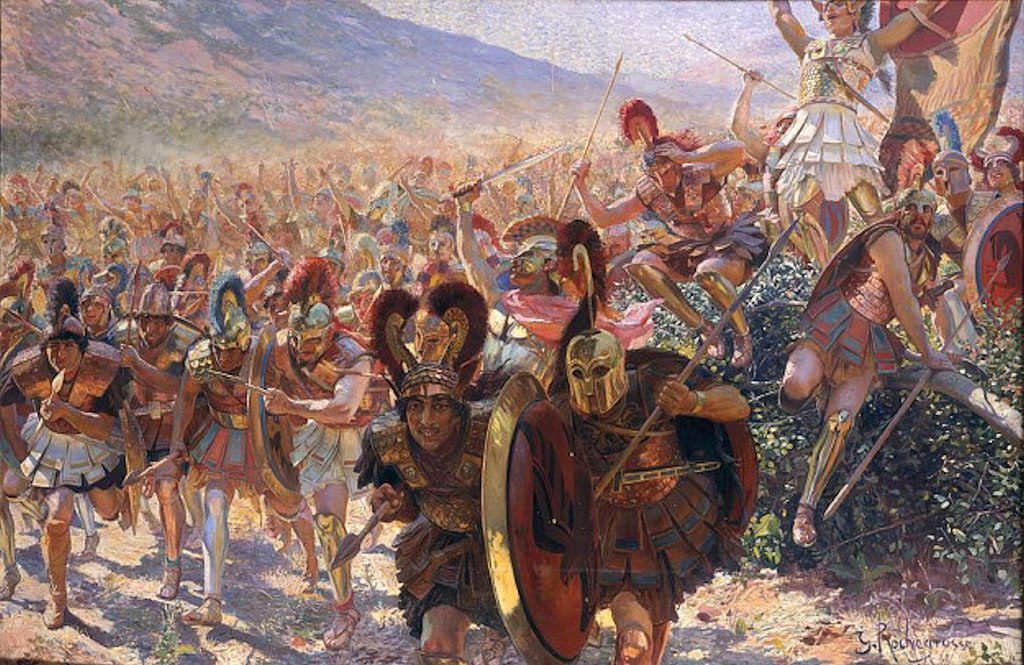
General History Quiz 65
Weekly 10 Question History Quiz.
See how your history knowledge stacks up!
1. Which Greek city state defeated the Persians at the Battle of Marathon in 490BC?
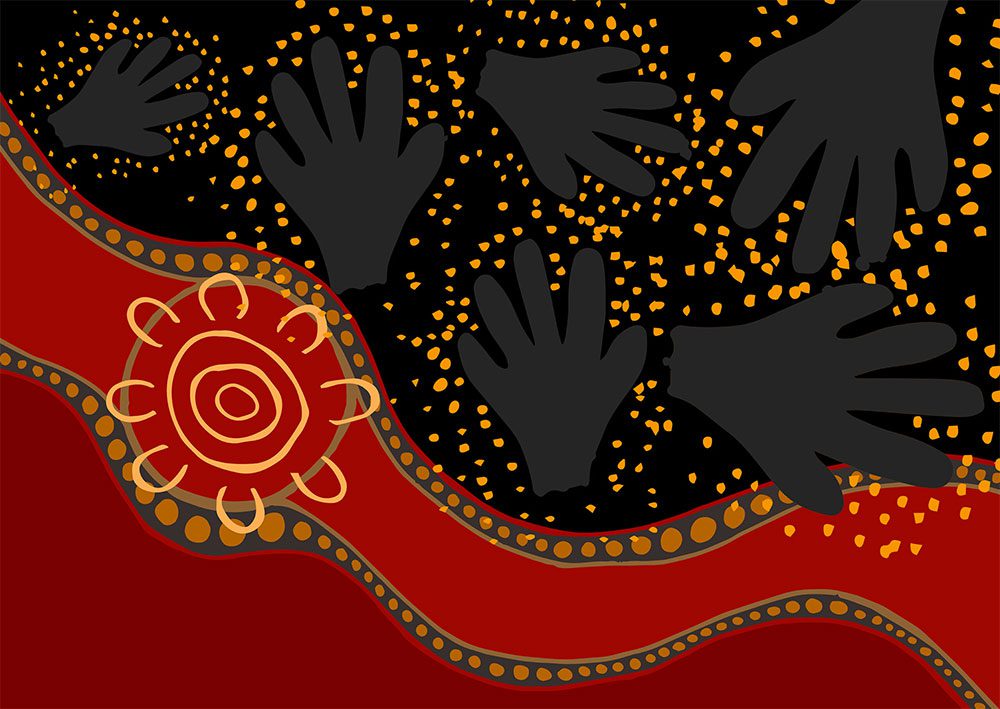
Finding Your Ancestors: Researching Aboriginal Family History in NSW
Most Aboriginal people are already historians. They hold knowledge of family ancestry, culture and history, and often treasured family photos and documents. There is much more to find online and in libraries and archives, but if you haven’t searched in these places before, it can be a bit hard to know where to start. Finding Your […]
The text of this article was commissioned by History Guild as part of our work to improve historical literacy. If you would like to reproduce it please get in touch via this form.



